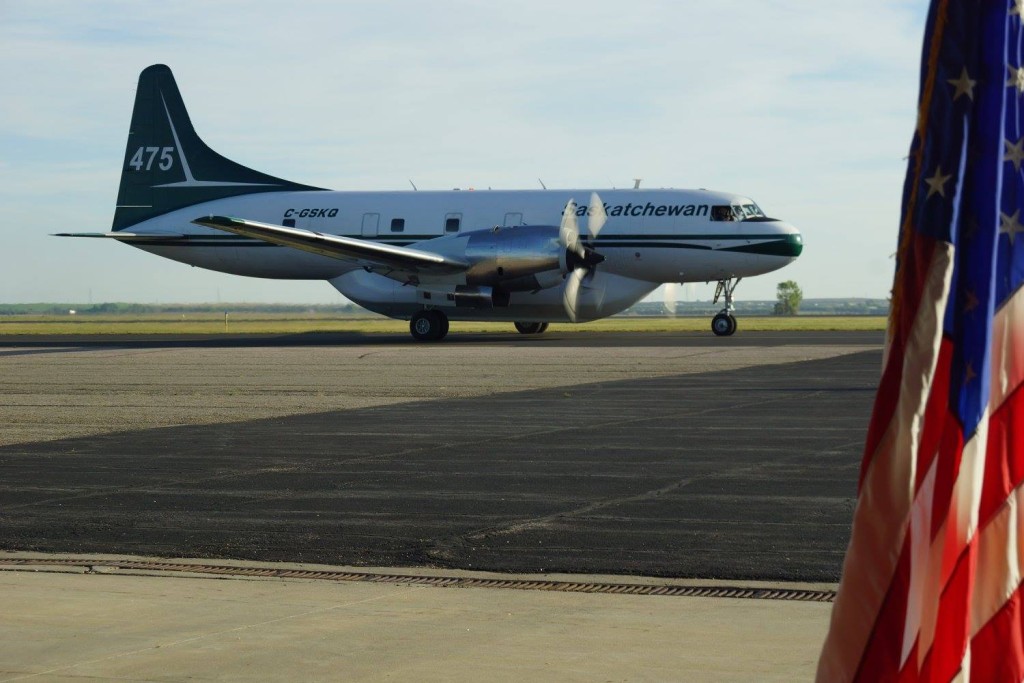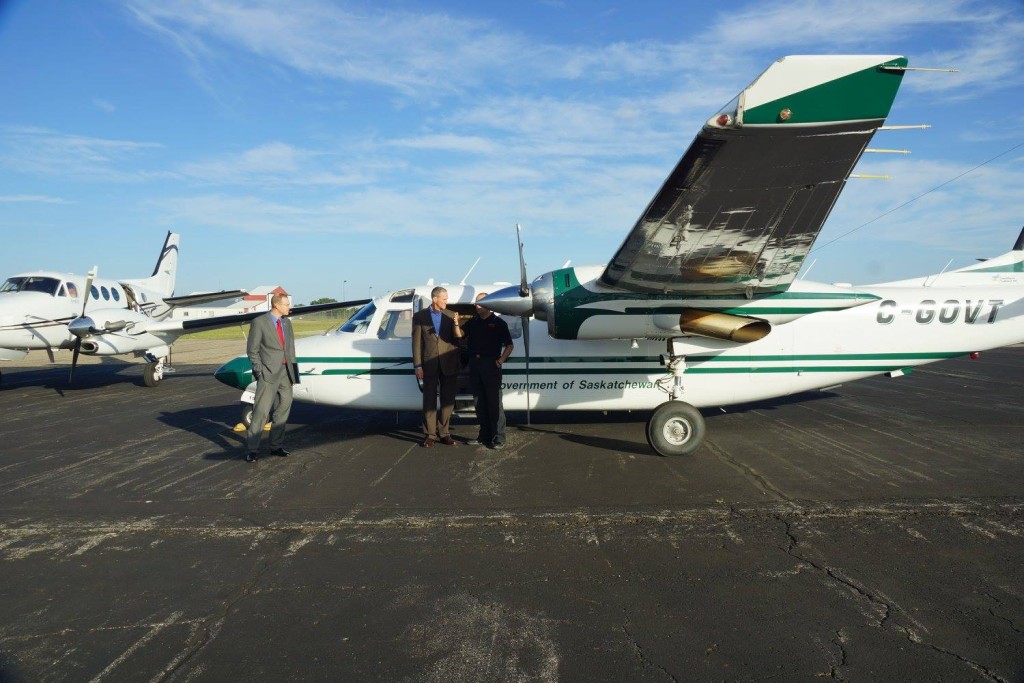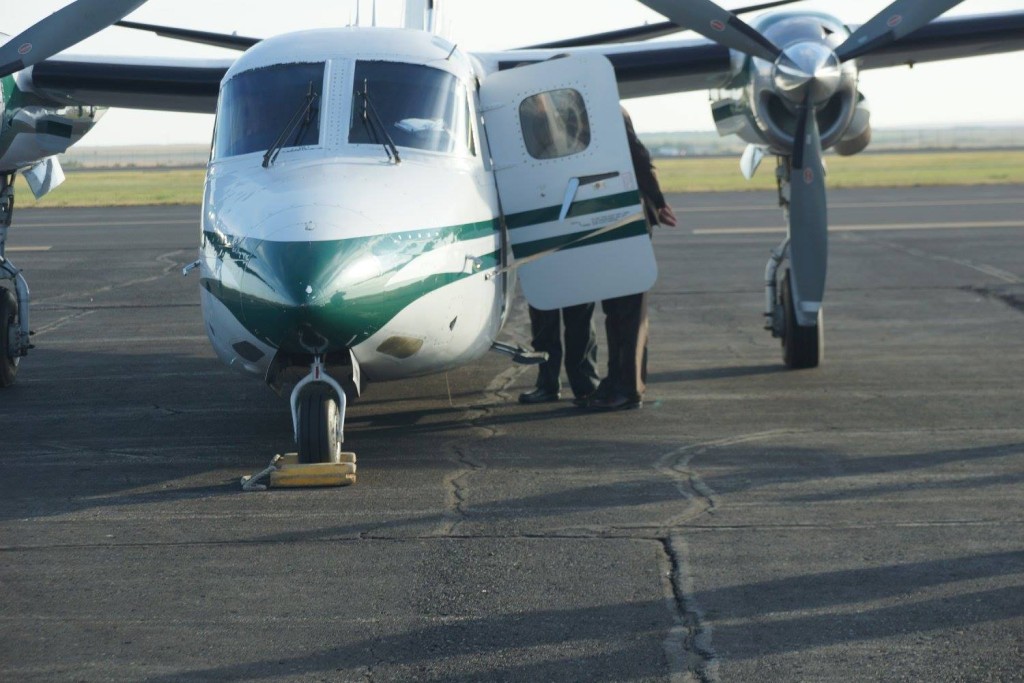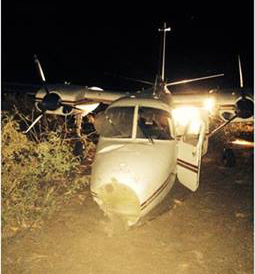Above: Saskatchewan air tanker 471 lands at Medford, Oregon July 19, 2018.
Tim Crippin shot these photos of firefighting aircraft arriving at the Medford, Oregon airport July 19. The two air tankers and the Bird Dog aircraft are owned by the government of Saskatchewan. The planes were mobilized through the Pacific Northwest Compact to Oregon; it was not an action that was taken by the National Interagency Coordination Center (NICC).
Tanker 471 was manufactured in 1958, and Tanker 474 was manufactured in 1955; both are Convair 580s. They have both been retrofitted with turbine engines and have now probably adopted a new model name. Some of the converted Convairs hold up to 2,100 gallons of retardant.
The Canadians use “Bird Dog” aircraft in a role similar to lead planes in the United States. A Bird Dog usually works with two air tankers as a three-aircraft module. This one, 161, is an Aero Commander 690D.
Air tankers from Saskatchewan were also borrowed to temporarily augment the U.S. fleet in 2014 and 2015.
In September, 2015 Saskatchewan Tanker 475 and a Bird Dog visited Pierre, South Dakota on an introductory tour after the province became a member of the Great Plains Interstate Fire Compact.
Conair operates at least one turbine engine Convair 440, Tanker 42, that they call a CV-580. They have other Convairs too; a couple of them worked out of Medford in 2016, as documented by Tim.
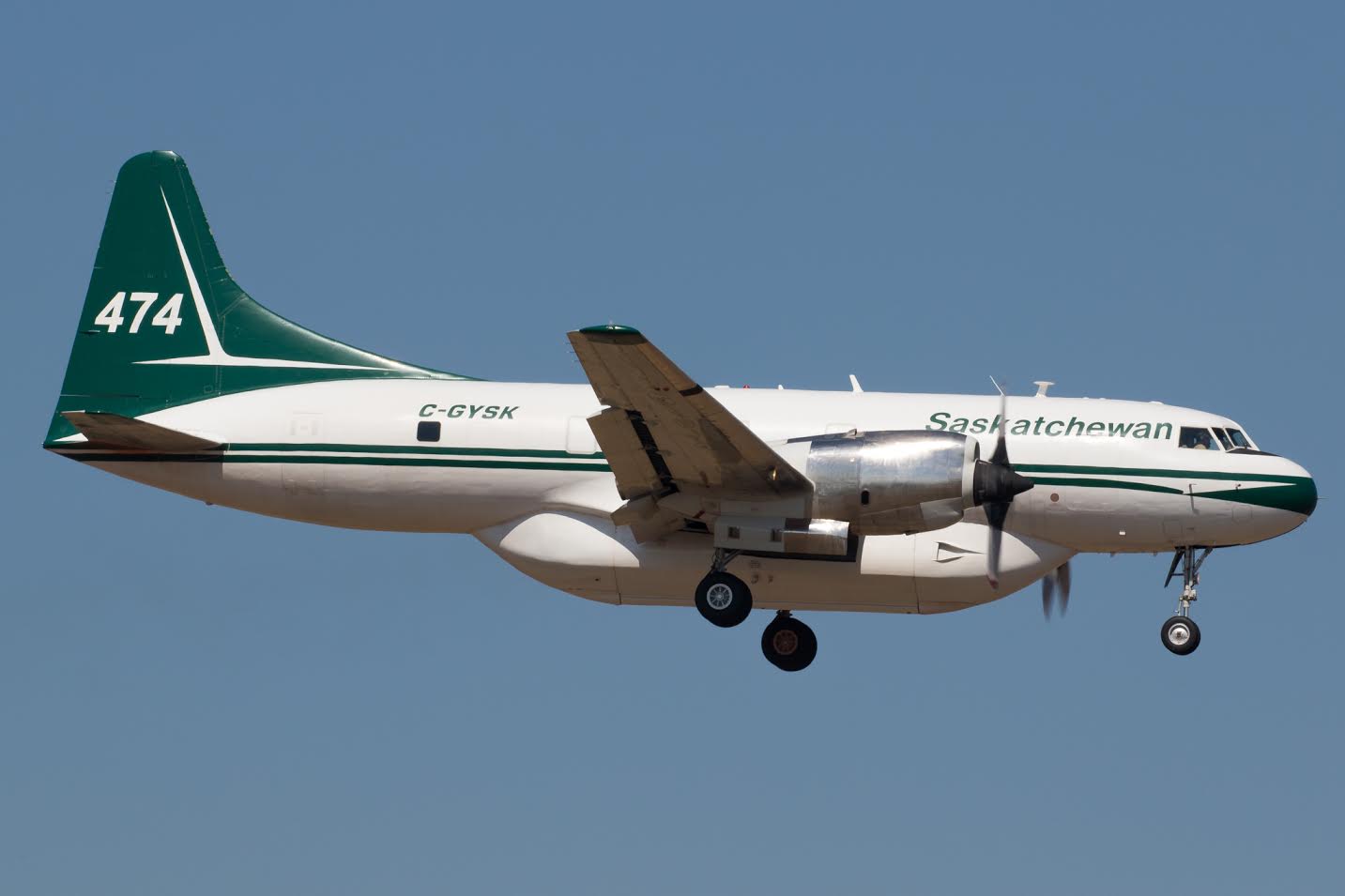
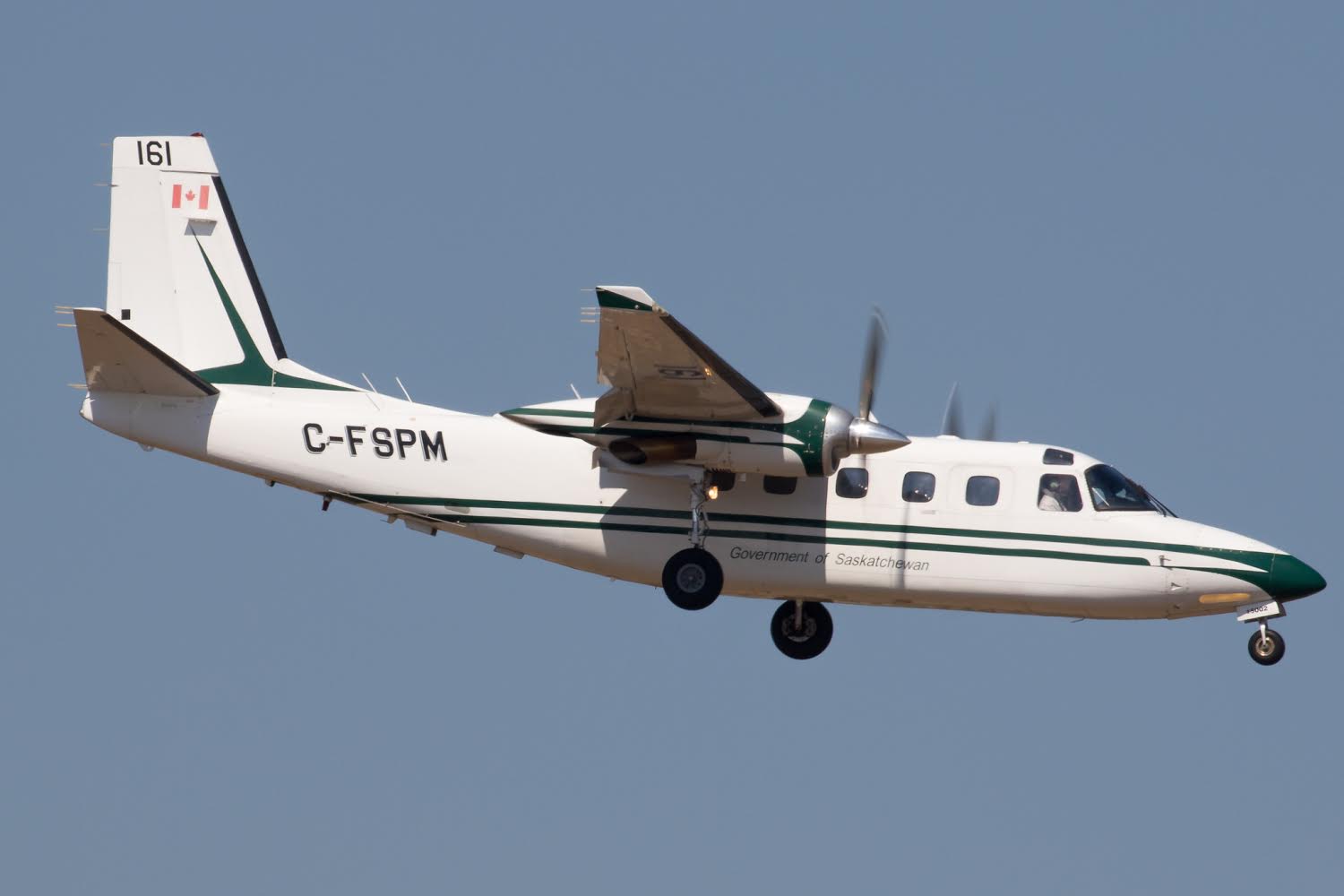
In addition to these three aircraft, other firefighting resources have been flowing across the international boundary in recent weeks from the U.S. to Canada:
- NICC dispatched 12 wildland federal firefighters to Ontario, Canada.
- The Northeast Compact sent resources to Ontario including three Type 2IA crews from New Hampshire, Maine and Massachusetts. However, the New Hampshire and Maine crews were demobed earlier this week and the Massachusetts crew will be demobed on Sunday.
- Maine will be sending a second Type 2 IA crew to Ontario on Saturday.
- The Great Lakes Compact has sent to Ontario 10 single resources (2 aviation managers and eight firefighters).
- Wisconsin State will be mobilizing eight firefighters also to Ontario, Canada.
No aircraft have been sent to Canada from the U.S.



